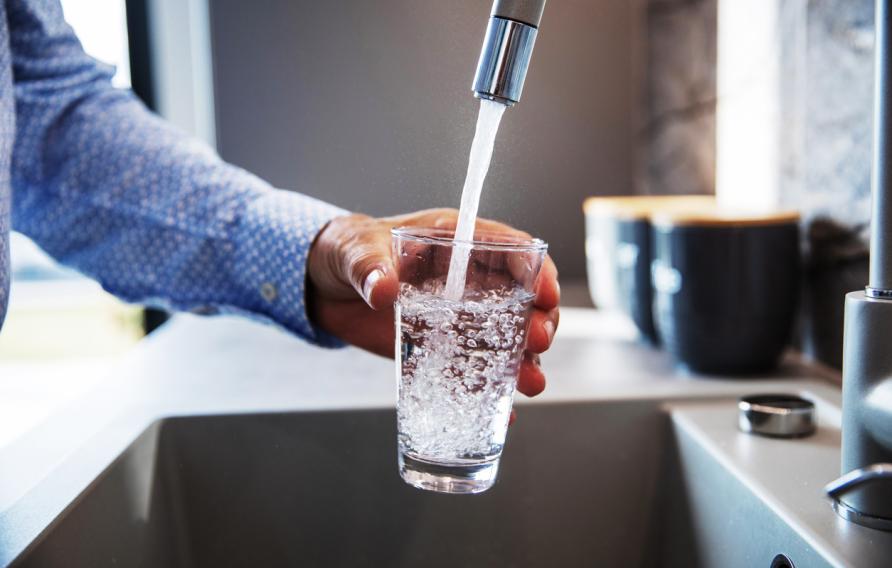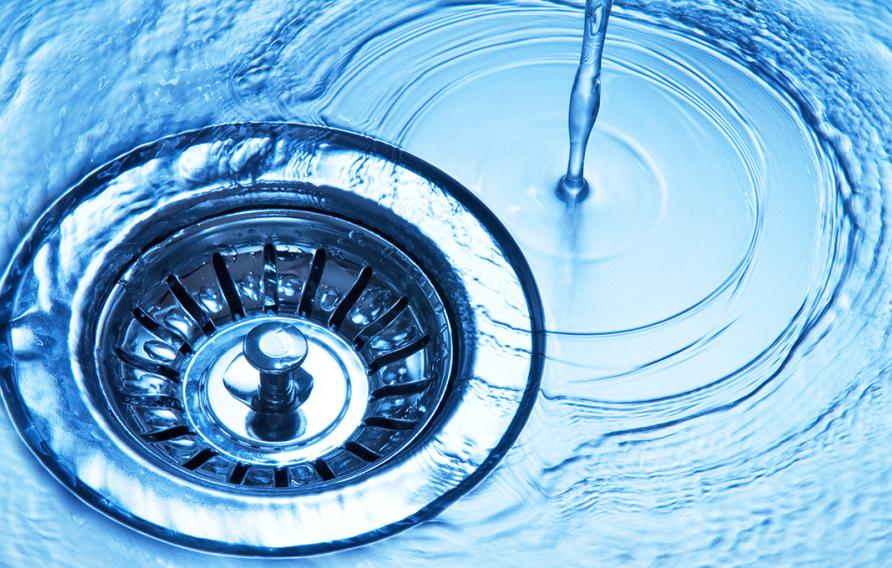
On June 15, 2022, the U.S. Environmental Protection Agency (EPA) released new drinking water Health Advisories for four per- and polyfluoroalkyl substances (PFAS): PFOA, PFOS, PFBS, and GenX. For PFOA and PFOS, the health advisories are considered interim and updated from the previous – and much higher – values that have existed since 2016. Whereas, for PFBS and GenX, the advisories are newly developed and considered final as part of the EPA’s October 2021 PFAS Strategic Roadmap. The values are provided in the table below.
|
Compound |
Previous Value |
Current Value |
|
PFOA |
70 ng/L |
0.004 ng/L |
|
PFOS |
70 ng/L |
0.02 ng/L |
|
PFBS |
Did not exist |
2000 ng/L |
|
GenX |
Did not Exist |
10 ng/L |
Jacobs provides guidance on the EPA’s new health advisories, which include much lower levels for two common PFAS compounds.
What is a Drinking Water Health Advisory (HA) and how does it relate to a Maximum Contaminant Level (MCL)?
EPA defines a HA as a non-enforceable and non-regulatory value which provides technical information to states agencies and other public health officials on health effects, analytical methods, and treatment technologies associated with drinking water contamination. The HA is the minimum concentration of a compound which may present health risks to an individual over a lifetime of exposure. Because there is uncertainty of the health effects associated with long-term exposure to compounds, EPA can set very low HA values.
In contrast, a maximum contaminant level (MCL) is a regulatorily enforceable standard. The EPA has stated its intent to establish a National Primary Drinking Water Regulation for PFOA and PFOS in its Strategic Roadmap. The agency recently reiterated its intent to propose a draft MCL before the end of 2022.
The HA is often the starting point for establishing a new MCL. First, the EPA must identify an MCL goal (MCLG). An MCLG can be a very low target value or even zero. It is important to remember that a goal of zero is just that, a goal. In reality, achieving zero is a target that cannot be measured or practically implemented. Thus, MCLs can be higher factoring in economics and/or can be a technology-based regulation.
Why are the new HAs for PFOA and PFOS so much lower?
The previous 2016 values were based on mice studies which were translated to human populations and focused on effects such as low birthweight. Additional science available since 2016 has incorporated studies on human populations and now identifies reduced immune response in children 0-5 years old as the basis. Although the science of toxicology is complex, the HA equation is quite simple:

A = human equivalent dose known as HED (mg/Kg-day)
B = drinking water intake known as DWI (L/Kg-day)
C = Uncertainty Factor. A/C is known as chronic reference dose (RfD)
D = relative contribution. How much intake is associated with drinking water
A comparison of the relative values for PFOA shows the resulting difference.
|
Parameter |
2016 |
2022 |
Difference |
|
A (RfD) |
10-3 |
10-8 |
100,000X lower |
|
B (DWI) |
10-2 |
10-2 |
Same |
|
C (UF) |
102 |
10 |
10X less uncertain |
|
D (RSC) |
0.2 |
0.2 |
Same |
|
HA |
70 |
0.004 |
~ 10,000X lower |
Interpretation of these complex health studies can be subjective, and there is rarely a clear answer. A recent statement published by the American Water Works Association (AWWA) indicated that the PFOA and PFOS advisory levels are extremely low and do not reflect the draft recommendations of EPA's own expert Science Advisory Board review.
How can we confirm if a sample is less than the HA value?
The current analytical method detection capabilities are approximately 0.3 ng/L or greater. This is not only for current methods of 537.1 and 533, but also for the proposed Method 1633. So, for PFOA and PFOS, the short answer is that we cannot detect concentrations at the new HA values; the HAs are 2-3X lower than the lowest detection limit. Thus, for PFOA and PFOS, a value below analytical detection (i.e., ND) does not mean below the new interim HA.
However, the new HAs for PFBS and GenX can be measured with existing analytical capabilities.
In a recent inquiry to some top academic PFAS chemists, it was confirmed that values of 0.004 to 0.02 ng/L (or 4 to 20 parts-per-quadrillion) are not being measured in advanced research laboratories.
Guidance for utilities
For utilities in states with State-Level MCLs, these MCL values are enforceable and are your criteria for finished drinking water.
For utilities in states with State-Level criteria (non-MCL values) these values are your primary consideration. Remain in contact with your primacy agency for future guidance. States may be reviewing the science behind the new HAs to see if adjustments to current state-issued values are required.
For utilities operating in states awaiting federal MCLs for action, it is anticipated these will be developed in the near future. And since there is no way to impose criteria that cannot be measured, it is likely that MCLs for these compounds will be lower than the previous health advisory of 70 ng/L, but certainly at a level quantifiable with current technology. In the meantime, the EPA currently recommends taking action to reduce concentrations in drinking water when compounds are detected above the minimum reporting level (4 ng/L or greater for PFOA and PFOS).
How Jacobs can help
For all utilities, concerns may be raised by the public trying to understand the recent changes and/or why the EPA values are now lower than State values. It is also understood that there is now a gap in being able to confirm that drinking water treatment is still meeting its intended purpose.
To support our clients with these new concerns, Jacobs can develop documents to assist with website and public meetings communications or provide additional guidance on the regulatory requirements in respective states. We are also supporting clients as they look to secure a portion of the $10 billion of funding allocated to PFAS monitoring and treatment in the Infrastructure Investment and Jobs Act (IIJA).
For more information on PFAS considerations in the water sector, Jacobs previously hosted an “In the kNOW” webinar on the topic which can be viewed here.
Jacobs’ environmental and water-focused technologists have been supporting clients with PFAS assessments at thousands of potential release locations around the globe. Our leadership is predicated on deep knowledge of our clients’ industries and processes combined with a thorough understanding of PFAS chemical behavior, regulatory issues and treatment approaches.
About the authors

Dr. Scott Grieco is the Global Technology Leader for Emerging Contaminants and Groundwater Treatment within Jacobs Drinking Water & Reuse group. His area of expertise is physical/chemical treatment of emerging contaminants and persistent environmental compounds, with a specific emphasis on adsorption processes and technologies. He has over 29 years of experience in the evaluation, design, and optimization of water and wastewater treatment systems across the public utility, remediation, and industrial sectors.

Dr. Russell Ford’s career has concentrated on improving drinking water quality and providing a positive impact on public health around the globe. As our Global Drinking Water & Reuse Solutions Director, Russell leads our drinking water business from both a technical and leadership perspective, able to bring the best resources to deliver critical client solutions.
You might be interested in...
-
 Webinars
WebinarsPFAS Considerations in the Water Sector
This webinar is focused on PFAS considerations in the water sector with a look at the latest information on sampling, analytical methods and best available treatment technologies for removing per-and polyfluoroalkyl substances (PFAS) from water systems and wastewater applications.
-
Page
PFAS and Emerging Contaminants
Navigating PFAS and emerging contaminants to enhance health and safety, ensure regulatory compliance and maintain business continuity.
-
 News
NewsRevisions and Improvements: Navigating the Lead & Copper Rule
The U.S. Environmental Protection Agency’s Lead and Copper Rule Revisions are now effective and the clock has started ticking down to the compliance deadline. At Jacobs, we have a dedicated team of Lead and Copper Rule experts that bring innovative solutions to the challenges imposed by the final rule. Let’s examine the requirements and the actions you need to take.
-
 Podcasts
PodcastsTackling the Environmental Challenge of PFAS
Per- and polyfluoalkyl substances (PFAS) are a large family of organic compounds with widespread use and persistence in the environment. In this episode of Inflection Points, Jacobs Global Environmental Market Director Jan Walstrom and Jacobs Global Water Market Director (Retired) Peter Nicol discuss the source and nature of PFAS chemicals, why they’re a growing public health concern and treatment and remediation solutions for impacted soil, groundwater and drinking water.
-
 News
NewsJacobs Awarded PFAS Treatment Testing Support Services Contract with the Orange County Water District
Jacobs has been selected by the Orange County Water District (OCWD) to provide treatment testing support services for per- and polyfluoroalkyl substances (PFAS), a family of oil and water-resistant chemicals found in numerous everyday consumer products and airport firefighting foams that have infiltrated groundwater supplies over several decades.












































